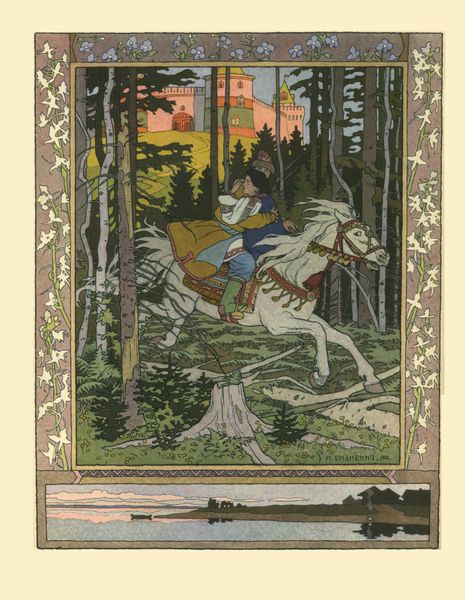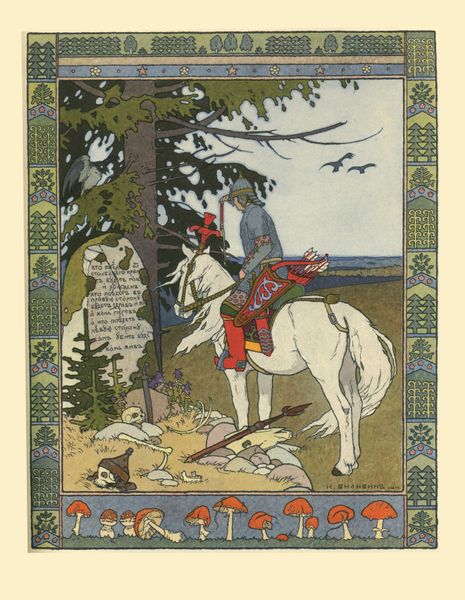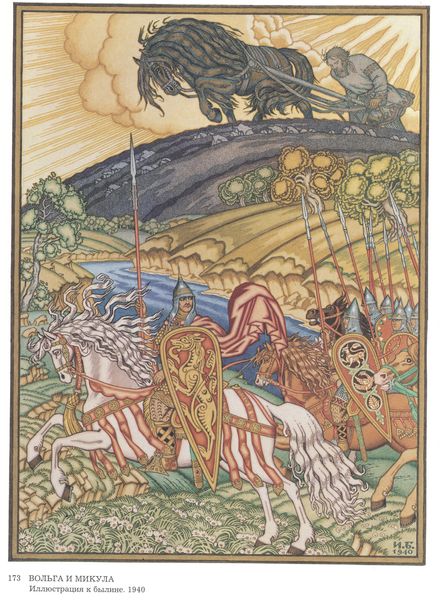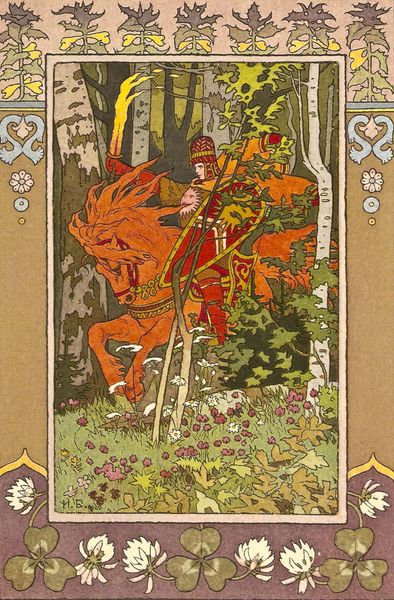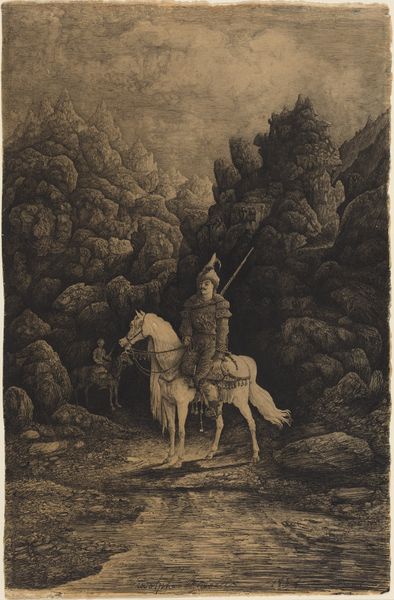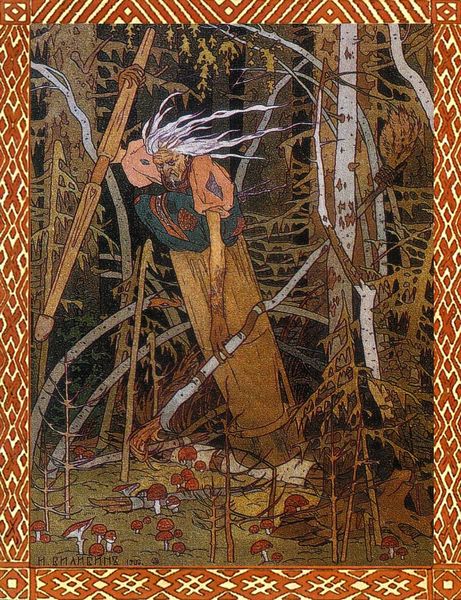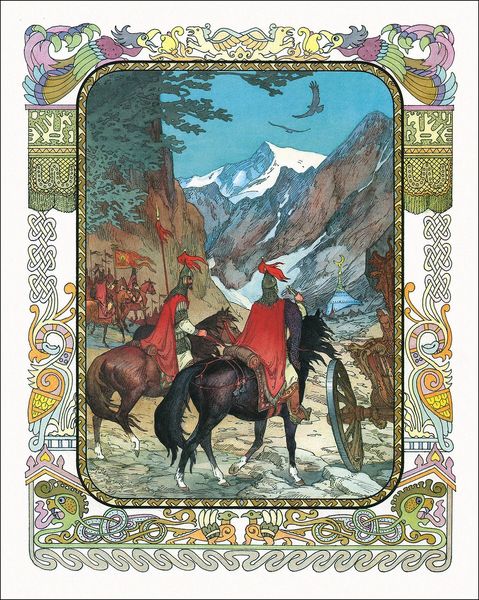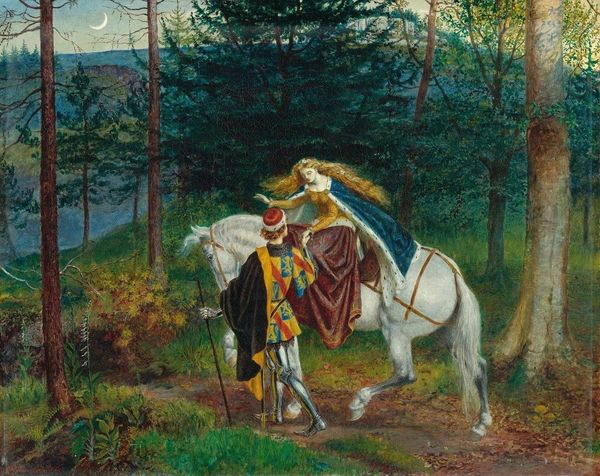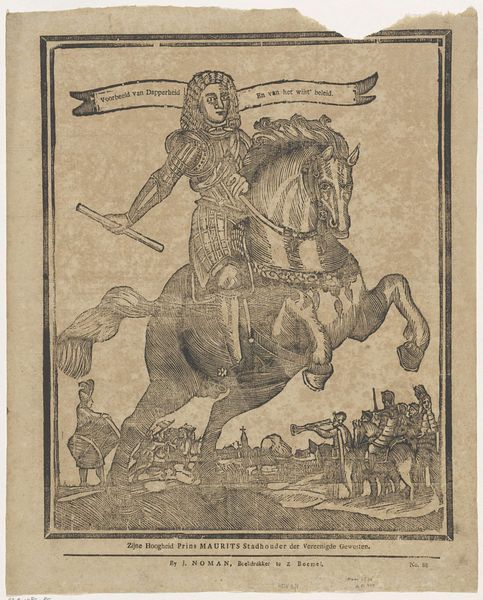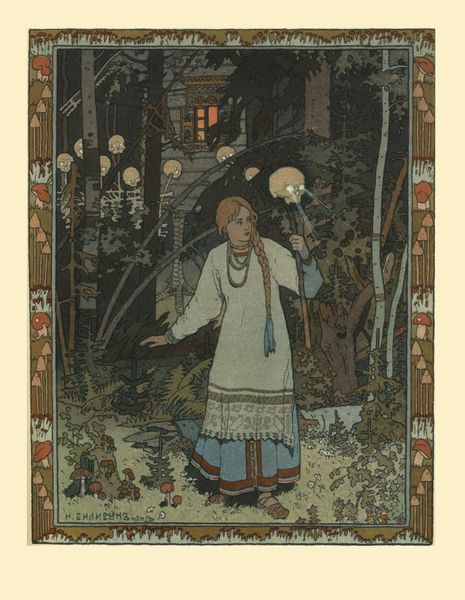
tempera, print
#
narrative-art
#
tempera
# print
#
landscape
#
fantasy-art
#
figuration
#
mythology
#
symbolism
#
russian-avant-garde
Copyright: Public domain
Curator: This is Ivan Bilibin's "Illustration for the fairy tale 'Vasilisa the Beautiful'," created around 1900. It’s done in tempera and also exists as a print, reflecting the artist's deep engagement with Russian folklore and the aesthetics of the Russian Avant-Garde. Editor: Woah. Right away, this has got a melancholic, fairy-tale-gone-gothic vibe. It’s moody; that dark horseman could be straight out of a Slavic Batman tale. And that frame! It looks almost Byzantine with its winged figures, very old world. Curator: Indeed! Bilibin’s illustrations played a crucial role in shaping a national artistic identity, particularly through revisiting and visually codifying folklore in a way that aligned with larger nationalist projects emerging at the time. Consider how it borrows from Art Nouveau and *Mir iskusstva*. It creates this incredible blend of folk tradition and fin-de-siècle artistic styles. Editor: I love the details – look at the horse’s expression, the knight's posture. He’s got such presence in the space even though he seems a little slouched! It's more than just illustration; it feels like character study, you know? And the colors, even the muted ones, sing! Curator: And consider that "Vasilisa the Beautiful" itself explores themes of female empowerment and navigating patriarchal power structures. Bilibin gives visual form to those elements within the story, from Vasilisa's resourcefulness, and the complicated figure of Baba Yaga to this image's focus on an ostensibly "heroic" rider—with layered meanings of knightly valor or possible villainy in tow. Editor: Hmmm... Layered like the inks. Do you get the sense, though, that there's a stillness to this despite all the apparent action? He isn't rushing headlong anywhere—that horse has slowed down to a deliberate pace, giving them space for both contemplation and dread. What's behind them, what's ahead—so effective in communicating inner journeys, I'd say. Curator: A fine point. That reading adds complexity to it by pulling in this rich interplay between folk and cultural narratives from that time and how its enduring relevance rests in precisely that capacity for multiple perspectives on these core tensions. Editor: It's a reminder, really, of how much the stories we tell ourselves can hold and reflect. A small portal.
Comments
No comments
Be the first to comment and join the conversation on the ultimate creative platform.
